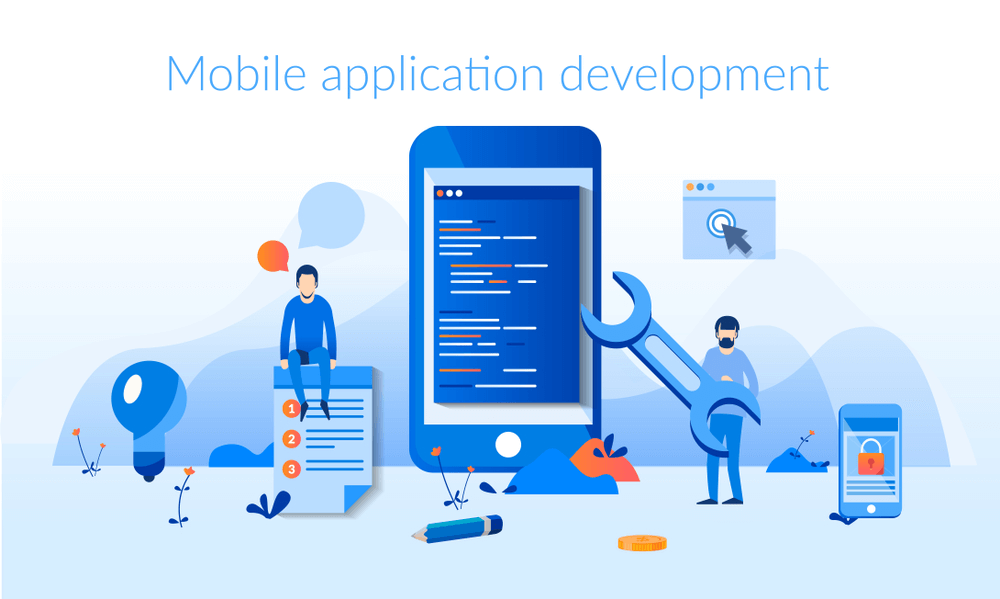Hello!
 If you are strategic and persistent, you will find that launching a new mobile or website application is less difficult and expensive than you had anticipated. The steps involved in the process of developing a custom app are fairly easy to understand. They serve different purposes, but taken together they aim to save you time, reduce your investment in the structure, and maximize your return on investment.
If you are strategic and persistent, you will find that launching a new mobile or website application is less difficult and expensive than you had anticipated. The steps involved in the process of developing a custom app are fairly easy to understand. They serve different purposes, but taken together they aim to save you time, reduce your investment in the structure, and maximize your return on investment.
Applications nowadays are necessary if you want to attract more users to the services you offer or sell more of your products and at the same time promote your brand. Because of this one of the best decisions would be to look for a simple but powerful mobile app builder that will help you create an application that suits your needs. And the good news is some solutions do not require coding skills at all.
Analyze Your Potential Customers
You need to give as much attention to the person who will be using your app as you do to the app itself. Real understanding of a subject can only happen when you’re willing to invest the time and effort to learn it.
Gather feedback from people who represent your ideal customer. Find out what your target audience is thinking by exploring their online communities. Studying your audience can be done in a number of ways, but regardless of what route you take, the ultimate goal should be thorough research.
Assess the Market Situation
 There are probably tons of apps out there based on just about any target market you can imagine. We recommend that you learn about the apps that your particular audience is currently using so that the app you design will be as easy and effective for users as the products already on the market.
There are probably tons of apps out there based on just about any target market you can imagine. We recommend that you learn about the apps that your particular audience is currently using so that the app you design will be as easy and effective for users as the products already on the market.
You shouldn’t limit your research to your direct competitors, as other areas of the market may offer more potential. The fact is that we live in a time where your competition is not always in the same industry or even the same market.
Use Qualitative Data From App Reviews To Your Advantage
Reviews of the competition’s apps can give you ideas for improving your prototype. A review of an app on Google Play tends to start with an explanation of why the reviewer wants to use the app and then comments on whether or not the client succeeded.
Before you create your app, consider what other apps are doing right and wrong. Many users complain that a noted problem disrupts their experience. If you notice this happening often, it’s up to you to make sure your prototype addresses any issues that arise.
Collaboration With The Technical Team Is Essential
 The time is right to combine efforts once you have collected information about your audience, your market, your competitors, and your potential prospects. When you work on a project by yourself, you’re working in a silo. It’s important to collaborate with your team before creating a plan.
The time is right to combine efforts once you have collected information about your audience, your market, your competitors, and your potential prospects. When you work on a project by yourself, you’re working in a silo. It’s important to collaborate with your team before creating a plan.
In the prototype phase, you’re not writing code, but it’s important that you learn what can and can’t be done with your app. Share your plan with stakeholders and investors to build trust in your ability to deliver.
Embrace The Right Tools
Just as you would not try to build a house without the right tools, you shouldn’t try to build a prototype without the correct resources. If you don’t use the right tools when you begin prototyping your mobile app, you’re going to make a lot of mistakes along the way.
 The prototyping tools your company should use will vary, depending on your knowledge of each one. For some businesses, drag-and-drop software will be a great choice for making prototypes. But some businesses may find that a different type of tool is the best fit.
The prototyping tools your company should use will vary, depending on your knowledge of each one. For some businesses, drag-and-drop software will be a great choice for making prototypes. But some businesses may find that a different type of tool is the best fit.
Don’t feel inferior to a company just because they use one tool that you don’t.
Also read:
- 10 Proven Ways to Match Content With Search Intent
- How Does Identity Work Today?
- Harnessing the Power of Online Forms for Business Growth
Final Words
The rapid growth of mobile has created one of the biggest new financial opportunities for organizations – the launching of apps.
If you create an app that fails to serve your user base, you’re wasting your time and money. Have a purpose in mind when you work on your plan. To develop a successful app, start by understanding your target audience and building an app that people will use for many months.
Thank you!
Join us on social media!
See you!






